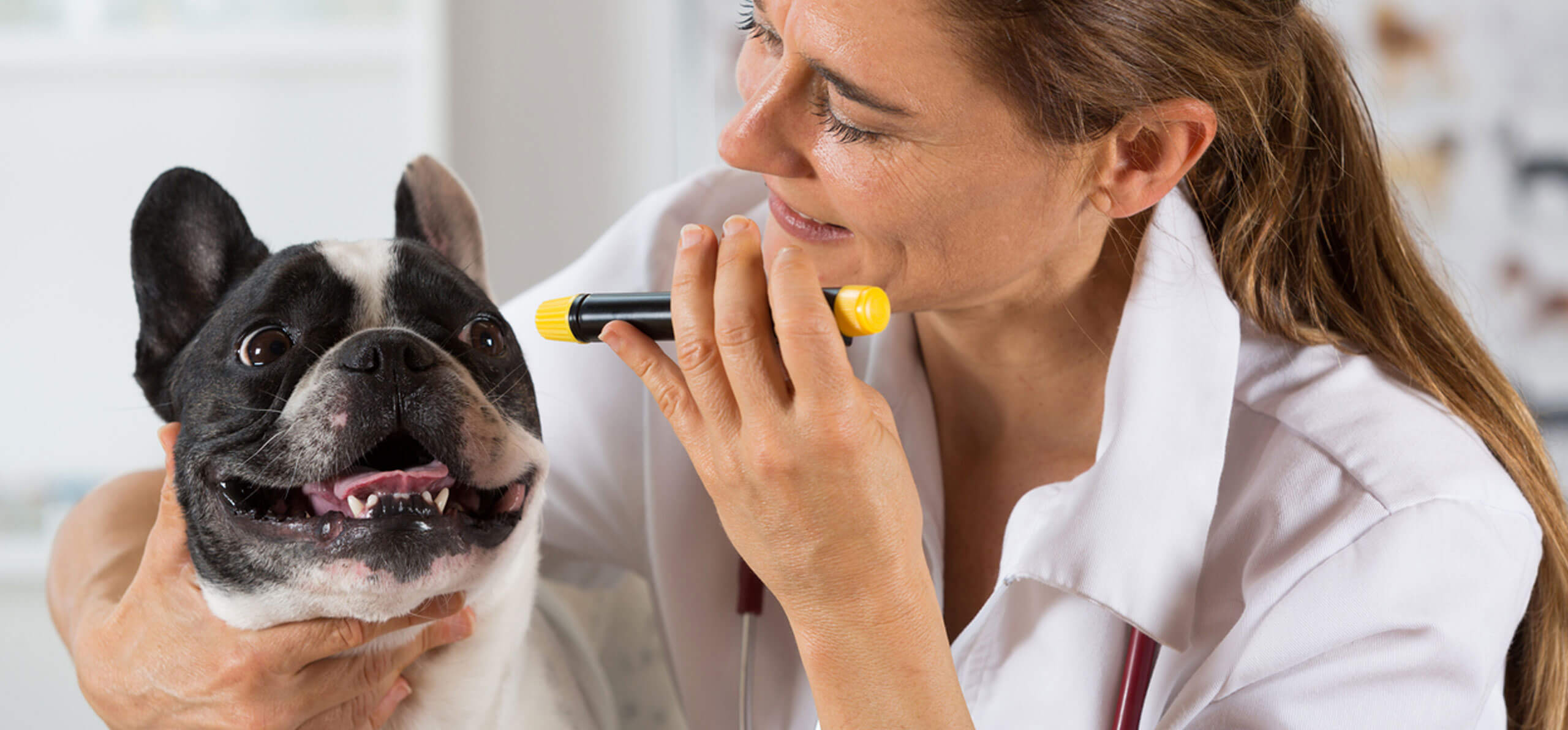Breed matters
Common eye issues among pets, such as glaucoma, cataracts or simply irritation and infection, are often hereditary. Do some research into your dog or cat’s breed to see if there is anything you should be watching for.
Jack and Parson Russell Terriers are prone to glaucoma, which may result in a gradual loss of vision. Flat-faced breeds like pugs and bulldogs commonly suffer from corneal exposure, and issues causing discomfort and vision loss, according to the American Kennel Club. Even dogs with long hair around their eyes can be prone to chronic infection and irritation.
Persian cats are genetically predisposed to blocked tear ducts, which can lead to tearing and occasional skin irritation. Although rarely cured, it’s rarely a major problem.
Eyeing food
One of the best preventive measures you can take to support eye health is the right diet. A nutrient-rich, all-natural diet supports overall good health, but you can help protect your best pal’s ocular health by looking for a few supplements in his/her food.
Muscular degeneration and chronic irritation commonly lead to the gradual loss of vision, so look for foods that are high in antioxidants to help protect your dog’s or cat’s eyes.
Blue Buffalo carries cat and dog food featuring nutrient-rich LifeSource Bits® containing some of nature’s most powerful antioxidants:
- Blueberries, which contain important carotenoids for eye health and night vision.
- Pumpkin, a source of fiber that contains free radicals to help reduce eye inflammation and aid in healthy digestion.
If your dog or cat is older or dealing with more serious issues, it’s important to add supplements to his/her diet.
See the signs
If your furry family member is dealing with an eye issue, it’s not usually a secret. If you notice your dog or cat squinting or scratching, rubbing and pawing at his or her eyes, then there’s most likely discomfort or irritation.
Shed some light on the situation and check your pal’s eyes carefully. Redness, tearing, dryness, or irritation are common signs that something isn’t right. Dogs in particular can also suffer from glaucoma, a cloudiness of the pupil, which can be seen under the right light.
As soon as you notice anything wrong with your dog’s or cat’s vision, call your veterinarian.
Tear stains and hair
Light-colored dogs and cats may develop brown or pink stains on their skin and hair under the inside corners of their eyes. Staining occurs when bacteria and yeast from your pet’s body reacts with tears. Sometimes clogged or shallow tear ducts, excessive tearing, allergies, or eye irritation caused by abnormal eyelids or eyelashes can cause this. Be sure your veterinarian checks your dog or cat for this type of condition.
Mucus discharge from being exposed to wind, dirt and pollen, as well as early-morning “sand man” visits cause the same crusty eye issues humans have. Mucus should be removed frequently so infections from the accumulating bacteria don’t occur.
Also, keep your pal’s hair trimmed around his/her eyes using blunt-tipped scissors so the hair doesn’t scratch your pet’s cornea. Dog breeds like Lhasa Apso, Shih Tzu, Bulldog, Persian and Himalayan cats, have to be careful. Hair around the eye can also cause tearing and staining.
It’s a good idea to use eye lubricants before grooming your dog or cat with cleansers or using topical insecticides so less eye irritation from those products will occur.
As with all health-related conditions, your pet’s vision health starts with you and your veterinarian. During the yearly visit, your veterinarian will always check your dog’s or cat’s eyes and recommend a specialist if necessary.
Providing a healthy diet, a watchful eye, and regular professional vet care will help your canine or feline see the world clearly for a long time.
Weekly cleaning how-to
Weekly eye cleanings with warm water and eye drops can help most pets although some may require more frequent cleanings or moisturizing drops.
1. Use a moist, warm cloth to remove debris at the corner of the eyes or on the skin around the eyes.
2. Hold an eyedropper or bottle with the same hand you rest on top of your pet’s head.
3. Use the thumb on your other hand to pull down your pet’s lower eyelid to act as a pouch for the eye drops.
4. Without touching the eye’s surface, squeeze the correct number of drops onto the eyeball, aiming for the center of the eye, then release your pet’s head.
5. Wipe away excess fluid, tears or debris. Your dog or cat will blink and disperse the solution over his/her eyes.
6. Always reward your best pal with a healthy treat after.

